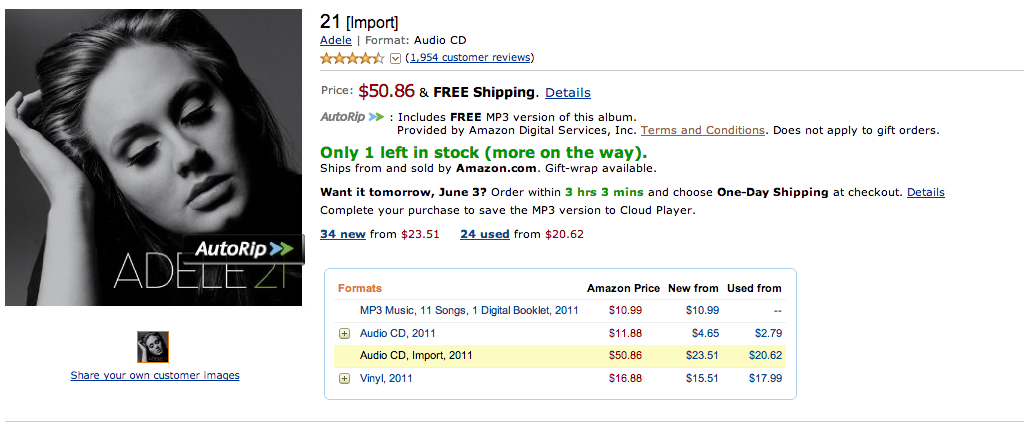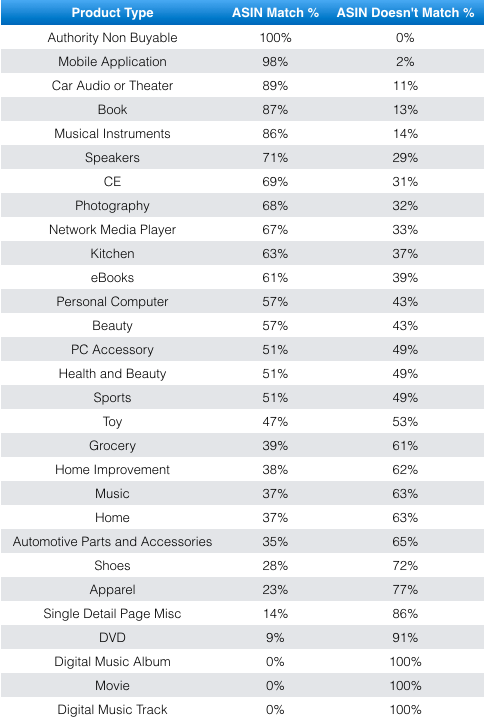Article
The Geo-Frag Effect. Nobody is SafeJesse Lakes
Geo-fragmentation can be scary! It’s the definition we give for when a global brand operates separate storefronts for different countries or regions. The challenge is, when you’re marketing to an international audience in an ecosystem that has separate stores for each region, you often run into language, shipping, currency, and user account constraints. This means using a link to a specific product in one of those stores creates a less than ideal user experience for anyone outside of that country or region. For example – if you are promoting something in the Amazon.com storefront, but you have a large audience in Europe, they are getting sent to store where they may not want (or even be able) to purchase the items you send them there for. This can leave your audience disappointed in the experience they received from your site, and bad experiences often mean a decrease in repeat visits. On top of that, it’s common for international storefronts to run their own affiliate programs. If you are taking advantage of just one of the affiliate programs then you are missing out on commissions from purchases outside that single storefront, and could be losing potential international sales from attempting to send all of your traffic to that single store using just to use its affiliate program. We sum up these two international marketing challenges – storefront specific links and affiliate programs – as simply “geo-fragmentation”. Once you solve these challenges it’s easy to improve conversions, and thus your EPC and total commissions, when marketing to an international audience. Geo-Fragmentation in Amazon Now back to Amazon. While very similar to layout and functionality, the many Amazon storefronts are almost completely separate. Currently, there are thirteen unique storefronts that your international traffic can purchase products from under the Amazon name. When dealing with an international audience, the trick, of course, is making sure that your users get to the intended item in their local Amazon storefront so they get the best experience possible. Eleven of those thirteen storefronts also have their own Associate Program so it’s in your best interest to not only get your users to the right spot to purchase but also ensure you use the correct affiliate program and tracking ID. Link Fragmentation “Well changing the links to work in the different storefronts is easy, right? Don’t you just change the domain name?” Sometimes it’s that easy but the majority of the time, it’s not. Let me elaborate. As those who dabble in the Amazon ecosystem know, the ASIN (Amazon Standard Identification Number) is the unique identifier that every product in their stores have. It is, for the most part, the essential piece of the link. When that ASIN exists in a storefront, making the link work for an international user is as easy as swapping out the domain name. We call this easier of the two solutions “localization”. However, sometimes the exact same product exists in an international storefront under a completely different ASIN. When this happens you’ll need to completely “translate” the link in order to get an international users to the intended item in their local store. This includes not only updating the domain name but also the ASIN. Let’s take an example product and see what it looks like in the different regions. Looking at Adele’s album “21” in the UK storefront we can see that the URL shows the ASIN of B004AB2JVI: http://www.amazon.co.uk/21-Adele/dp/B004AB2JVI We also happen to see this same ASIN in the other four European storefronts: France - http://www.amazon.fr/21-Adele/dp/B004AB2JVI Germany – http://www.amazon.de/21-Adele/dp/B004AB2JVI Italy – http://www.amazon.it/21-Adele/dp/B004AB2JVI Spain - http://www.amazon.es/21-Adele/dp/B004AB2JVI This is a perfect example of “localization” of a link, we just swapped “.co.uk” for “.de”, “.it”, and “.es”. However, let’s look internationally. US - http://www.amazon.com/21-Adele/dp/B004EBT5CU China - http://www.amazon.cn/%E9%98%BF%E9%BB%9B%E5%B0%94-21/dp/B00B7WJX4Y India - http://www.amazon.in/Adele-21/dp/B006H1MCV6 Japan - http://www.amazon.co.jp/21-%E3%82%A2%E3%83%87%E3%83%AB/dp/B0048JEEH4
A quick note on “Imports” – sometimes an item exists with the same ASIN in a foreign storefront, but as an “Import”. Imports are often out of stock, have a higher price than their local equivalents, and also come with much slower shipping times. They are typically best to be avoided.
Let’s take a look at some of the top categories on Amazon and see how closely they match between the US and UK storefronts. The table below was compiled from examining an average of 350 links from each product category, then seeing how often the ASIN was the same in both Amazon.com and Amazon.co.uk (with “import” items being ignored).
As you can see, the only category that has 100% ASIN match are pages that don’t actually have items for sale. “Authority Non Buyable” ASINS are for pages within Amazon that just give details about a person or group with links to their available items to purchase - for example, the Musician or Author pages. If you continue down the list, you’ll see that a smaller and smaller percentage of items have the same unique identifier between storefronts, and items such as digital music and Amazon Instant Videos don’t have a single ASIN match between the US and UK stores. Fragmentation Across Amazon Associates On top of the separation of items per storefront, there’s another challenge that Amazon’s global array of marketplaces present, and that is for their Amazon Associates program. The Associates Program is currently available in 11 of Amazon’s 13 storefronts and allows you to earn commissions from subsequent purchases on most anything in the store after clicking your specialized link. But the problem lies in the fact that the programs are actually specific to each marketplace. What this means is that if you sign up for the Amazon Associates program in the US, and manage to properly translate your links for your international audience, adding your amazon.com affiliate ID to any links that go outside of the amazon.com storefront still won’t earn you any commissions from those international sales. The good news is Amazon does allow you to sign up for each of the different programs for the supported storefronts. It is a bit of a process, but once you’re approved for each, you can then earn commissions from the 11 storefronts that Amazon supports with their Associates Program. The bad news is that you will then have to separately manage each of the 11 accounts that you have in different places. Further, the programs in China, Japan, and India are very restrictive about payouts, and require a bank account within their countries. Fighting the Division So, how do international marketers that sell or promote items in the Amazon storefronts make sure their traffic gets to the right spot to effortlessly purchase, and yet also take full advantage of the Associates Programs? A growing number of specialized link management platforms are surfacing that let you build a single, public facing link with a dynamic destination, depending on where in the world it’s clicked. This can be a good first step, especially for those who only have a product or two they are promoting and don’t mind building each link manually. There are also a few specialized services that take this a step further and localize (and even sometimes translate) Amazon links based off the user’s locale. This eliminates the manual work for you, while increasing the likelihood of a conversion. Going even deeper, a couple of select services even manage your affiliate IDs so you only input them once, and all links are automatically affiliated for you from that point forward. |
 Add comment
(Comments: 0) Add comment
(Comments: 0) |



 Print
Print RSS
RSS



 Feedback
Feedback Submit Article
Submit Article